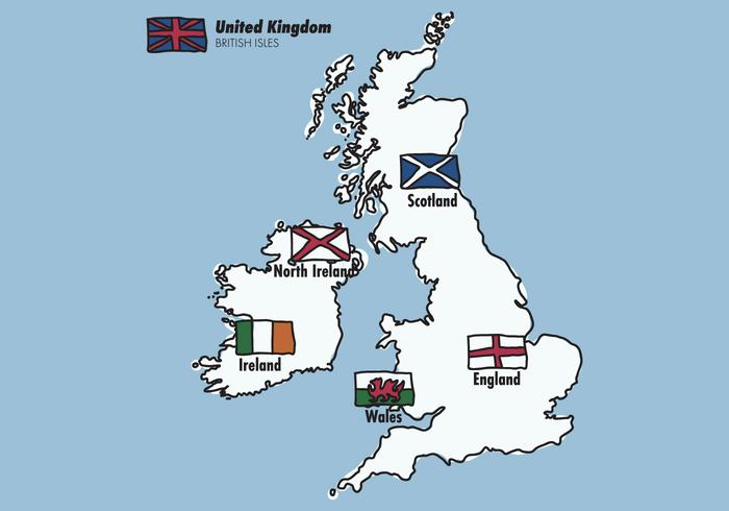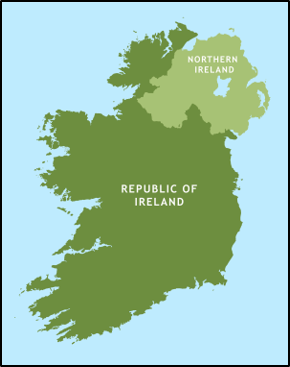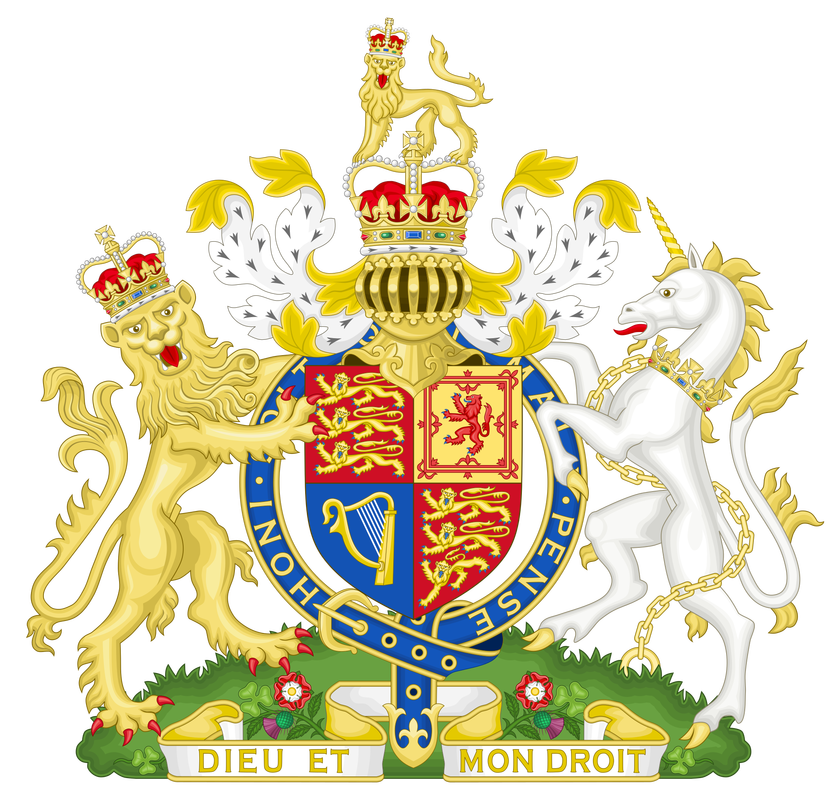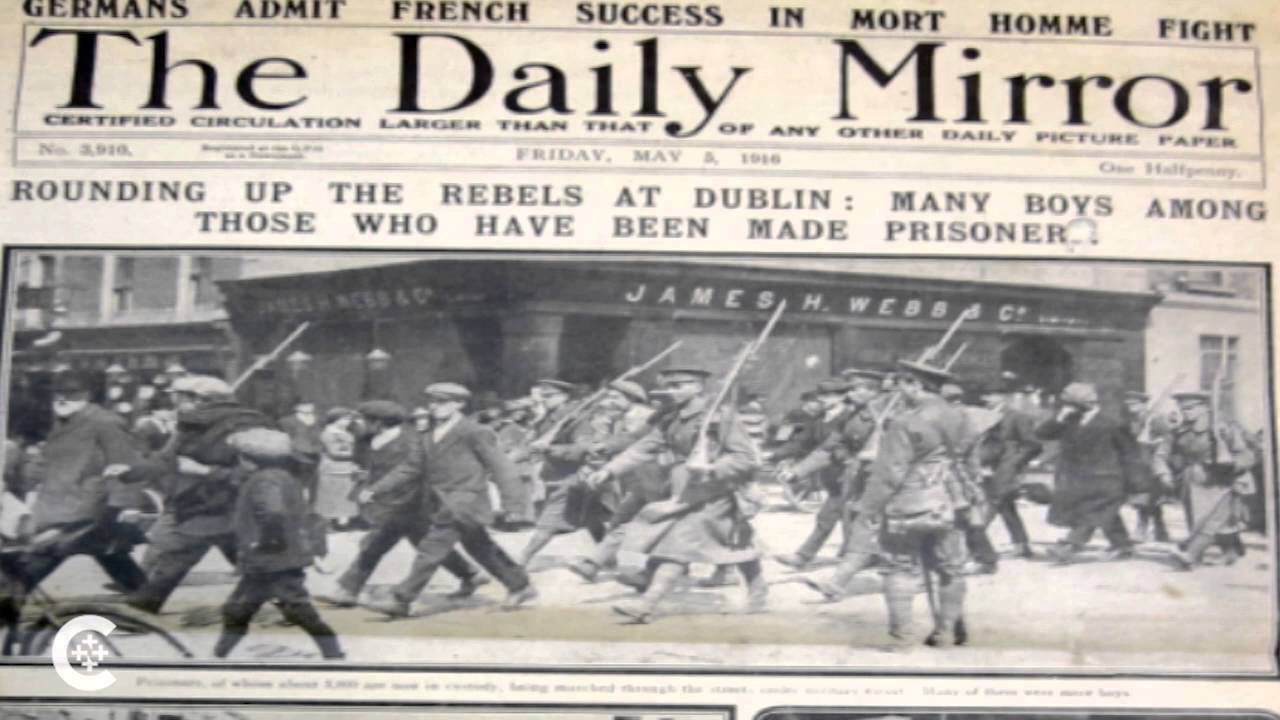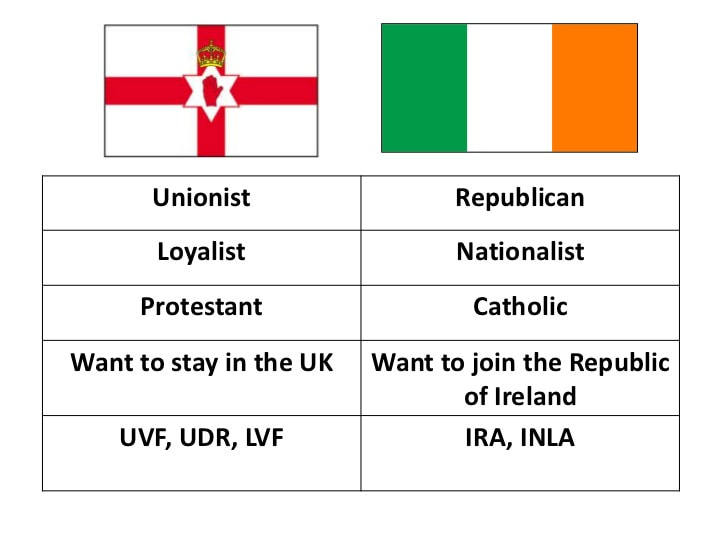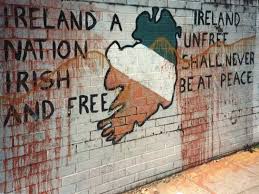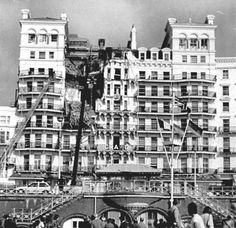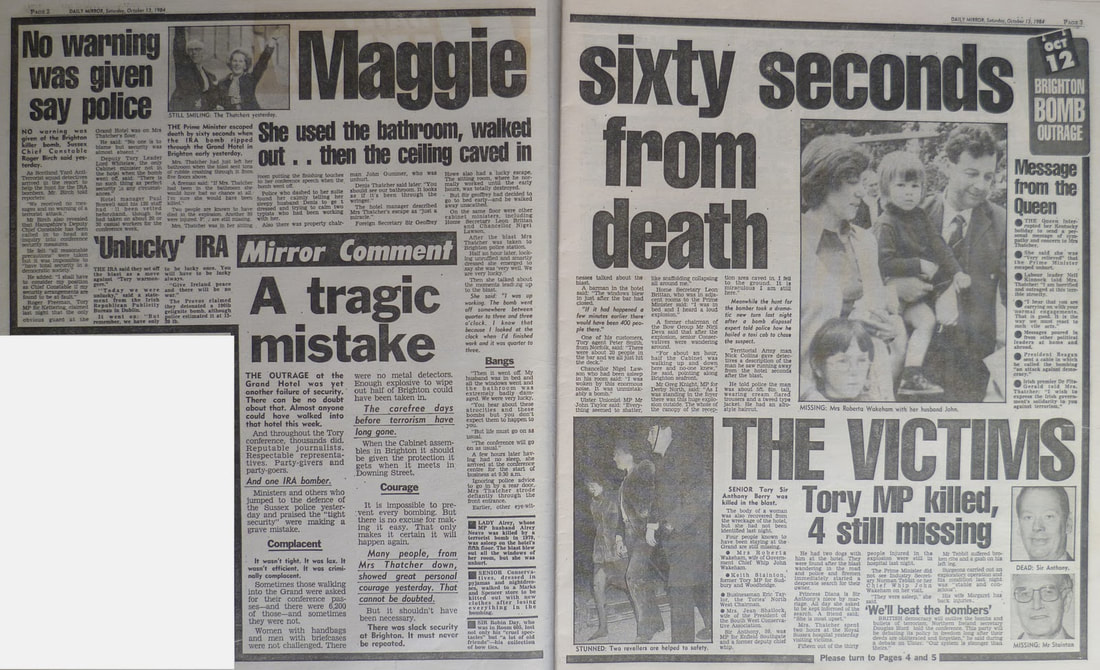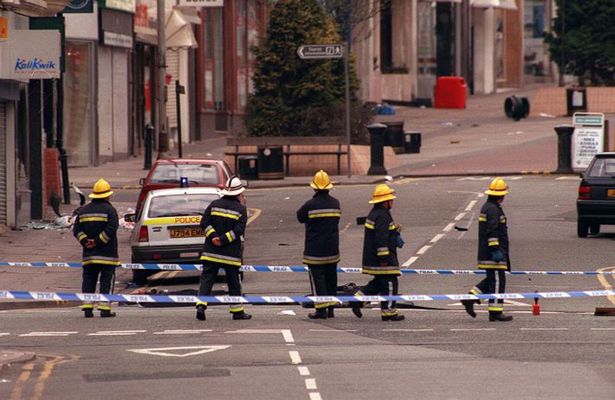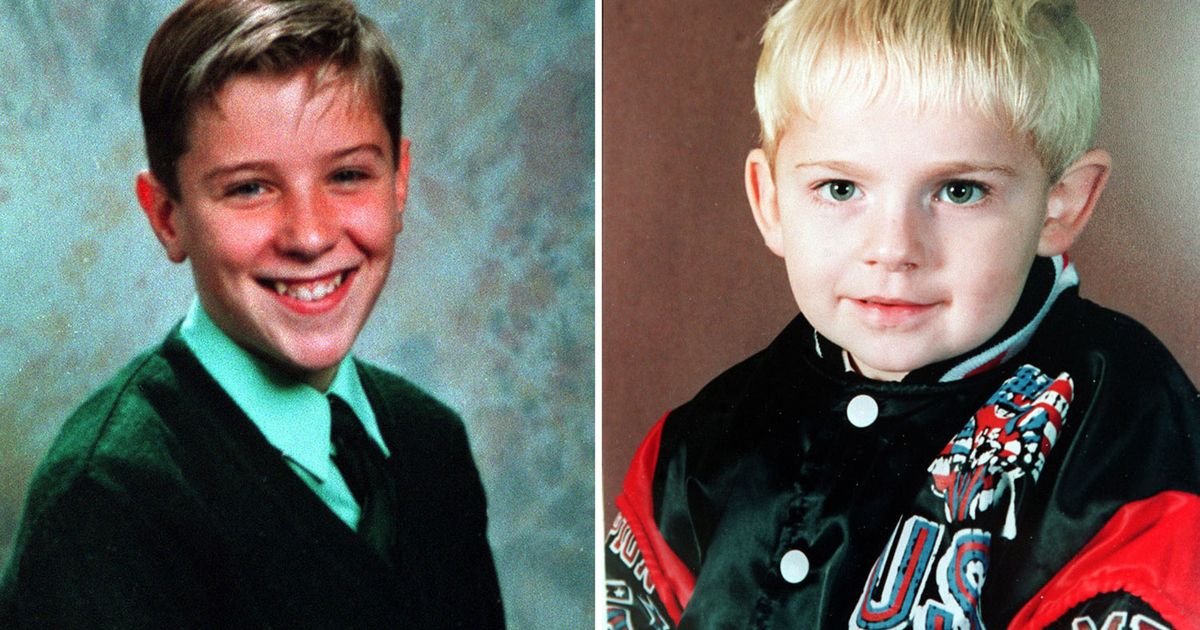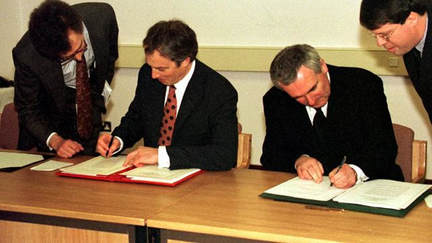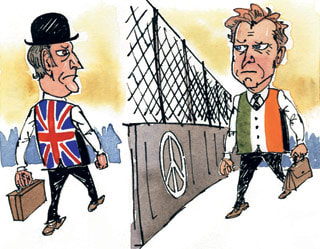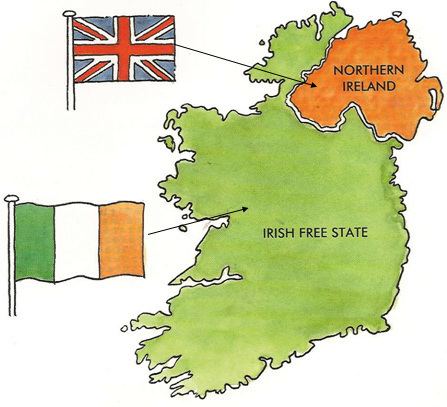|
|
Neighbours Across the Sea:
|
I- A very short introduction (Geography & Symbols)
Introduction
- The United Kingdom :
- The Republic of Ireland.
|
Documents à télécharger:
|
|
| ||||||||||||
II- Saint Patrick
|
Saint Patrick’s Story
Saint Patrick (Maewyn) was a Welsh born in AD35 and he had a pagan name. Indeed, he considered himself as a pagan – even maybe an atheist – until he turned/reached 16 years old. One day, a group of Irish people enslaved him and took him to Ireland. There, he used to serve a master for 6 years during which he became Christian and adopted a Christian name: Patrick, before he escaped. (He heard a voice telling him to run away). It reinforced / strengthened his faith in God. When he reached the British shore, he spent 12 years to study in monasteries. He was convinced that God gave him a mission to spread Christianism in Ireland. He went back to Ireland, traveled and established several schools and churches to teach his belief to Irishmen. During this time, he was arrested because Irish lords didn’t agree with his behavior. Eventually, he decided to buy his freedom from his former owner/ slaveholder. He didn’t hold a grudge against him. |
|
The slaveholder committed suicide because he could not stand / bear that is former slave bought his freedom. He set his house in fire and burnt it down.
There are many legends (spread) around / surround Saint Patrick. First, he was thought to be able to raise people from the dead. Then, it was believed that he got rid of the snakes in Ireland. There was no snakes in Ireland so the snakes are a metaphor to refer to pagans.
He stayed and worked in Ireland for at least 30 years before retiring. It is thought he would have been declared a saint in the 12th century.
The original color of Saint Patrick’s Day is blue although it changed to green because the flag is green (symbol of Catholicism). It was at the beginning a Christian holiday but it has evolved into a secular celebration.
In people’s mind Ireland is seen as a place with Leprechauns wearing a top hat, a clover, a beard, and a green coat, smoking a pipe and standing next to a pot of gold.
There are many legends (spread) around / surround Saint Patrick. First, he was thought to be able to raise people from the dead. Then, it was believed that he got rid of the snakes in Ireland. There was no snakes in Ireland so the snakes are a metaphor to refer to pagans.
He stayed and worked in Ireland for at least 30 years before retiring. It is thought he would have been declared a saint in the 12th century.
The original color of Saint Patrick’s Day is blue although it changed to green because the flag is green (symbol of Catholicism). It was at the beginning a Christian holiday but it has evolved into a secular celebration.
In people’s mind Ireland is seen as a place with Leprechauns wearing a top hat, a clover, a beard, and a green coat, smoking a pipe and standing next to a pot of gold.
III- The Birth of the United Kingdom
- Before 1485 every region was independent from each other. For instance, England was ruled by Henry VII and Scotland by James IV.
- In 1066, William the Conqueror defeated the English at the battle of Hastings and he crowned himself king of England. For 300 years, England was ruled by a French king and they grabbed Wales and some parts of Ireland (Dublin).
- In 1603, Elizabeth I passed away / kicked the bucket without any heir. So, the King of Scotland became king of both England & Scotland.
- In 1750 local kings of Ireland fought each other and Ireland wasn’t unified. So The English took advantage of the situation to “invade” and take the lead.
Source A shows the vision of an English person towards the Irish people. Indeed, they considered them as “savages” and “uncivilized”. The Brits looked down on the Irish.
On the contrary, source B shows of the Irish people, they thought that the English were arrogant killers who slaughtered them and their customs.
IV- Religious Problems
Religious problems in the British Isles
- Henry VIII wanted to divorce his wife and the Pope didn’t agree with it. So he decided that Britain would a Protestant Country. He created the Church of England.
- The main religion in Ireland was catholicism and Britain became protestant.
- The French were the allies of the Irish. The English were scared that the French might invade them passing through Ireland.
- James I was first the king of Scotland but when Queen Elizabeth died he became the king of the United Kingdom. The kingdoms of Wales, Scotland and England merged into one.
- James I decided to send protestant people in order to « civilise » the Irish peasants. He sent them to Ulster (Northern Ireland). => This was called: The ULSTER PLANTATION
- 1603 : Irish catholics owned the land in Ulster.
- 1750 : British protestants owned the land in Ulster.
V- British Symbols in Ireland
|
The Royal Coat of Arms acts as the official coat of arms for the British monarch.
The Royal Coat of Arms features a shield divided into four quarters. The quarters represent the symbols of Ireland, England, and Scotland. Wales does not play a role in the Royal Coat of Arms as when the Act of Union came about the Kingdom of Wales was already integral to England. The upper left and lower right quarters of the shield feature the three guardian lions of England. In the top right is the lion rampant, Scotland’s royal symbol. In the lower left is a harp which represents Ireland. Surrounding the shield is the Garter circlet. The Order of the Garter is a chivalric order first started by Edward III, an English monarch. The circlet is inscribed with the order of the motto: “Honi soit qui mal y pense” (shame on he who thinks evil). Above the shield is the royal crown which is topped with a golden crowned lion. A lion, representing England, stands on the “Dexter” (right-hand) side. A unicorn, representing Scotland, stands on the “Sinister” (left-hand) side. According to ancient legends, a free unicorn was a dangerous beast. This is why the heraldic unicorn is chained. |
The lion and unicorn stand upon a small frame, commonly referred to as a compartment. It features a thistle, Tudor rose and Shamrock. They respectively represent Scotland, England and Ireland.
Also along the compartment is the motto of English monarchs: “Die et mon Droit” (God and my Right). This motto has been carried to the present royal family.
The United Kingdom Coat of Arms is made up of the Arms of Scotland and England.
Wales is not represented in the Royal Arms as by the time of the Act of Union in 1707 Wales was already integral to England. However, there is a Welsh coat of arms.
www.royalcentral.co.uk
Also along the compartment is the motto of English monarchs: “Die et mon Droit” (God and my Right). This motto has been carried to the present royal family.
The United Kingdom Coat of Arms is made up of the Arms of Scotland and England.
Wales is not represented in the Royal Arms as by the time of the Act of Union in 1707 Wales was already integral to England. However, there is a Welsh coat of arms.
www.royalcentral.co.uk
VI- The Easter Rising
|
| ||||||||
VII- The Civil Rights Movement & The Troubles
|
Texte à télécharger:
|
| ||||||
Le conflit nord-irlandais, appelé aussi « Les Troubles » (anglais : The Troubles, ou irlandais : Na Trioblóidi), est une période de violence et d'agitation politique en Irlande du Nord dans la seconde moitié du xxe siècle. Il débute à la fin des années 1960 et est considéré comme terminé entre 1997 et 2007 selon les interprétations. La violence continue cependant après cette date, mais de façon occasionnelle et à petite échelle, tandis que la plupart des groupes belligérants déposent les armes.
Le conflit commence dans la seconde moitié des années 1960 par un mouvement pour les droits civiques contre la ségrégation confessionnelle que subit la minorité catholique.
L'opposition entre républicains et nationalistes (principalement catholiques) d'une part, loyalistes et unionistes (principalement protestants) d'autre part sur l'avenir de l'Irlande du Nord entraîne une montée de la violence qui dure pendant trente ans. Elle est le fait de groupes paramilitaires républicains, comme l'IRA provisoire dont le but est de mettre fin à l'autorité britannique en Irlande du Nord et de créer une République irlandaise sur l'ensemble de l'île, et loyalistes, comme l'Ulster Volunteer Force formée en 1966 pour stopper ce qu'il perçoit comme la détérioration du caractère britannique du pays, mais aussi d'émeutes populaires et des forces de sécurité de l'État, l'Armée britannique et la police.
Le conflit nord-irlandais est diversement défini par plusieurs de ses acteurs, soit comme une guerre, un conflit ethnique, une guérilla ou une guerre civile. L'action des groupes paramilitaires républicains (principalement l'IRA provisoire) est considérée comme du terrorisme par les forces de sécurité britanniques, mais aussi comme une révolution, une insurrection ou une résistance militaire à l'occupation et à l'impérialisme britannique par leurs partisans. Les historiens sont partagés sur ces qualifications, certains refusant l'usage du terme « terrorisme ».
Ce conflit affecte la vie quotidienne de la plupart des Nord-Irlandais, ainsi qu'incidemment celle des Anglais et des Irlandais dans le Sud de l'île. En plusieurs occasions entre 1969 et 1998, ce conflit manque de se transformer en une véritable guerre civile. Par exemple en 1972 après le Bloody Sunday ou pendant la grève de la faim de prisonniers en 1981, quand se forment des mobilisations massives et hostiles des deux parties.
En 1998, un processus de paix apporte une fin au conflit en s'appuyant sur l'accord du Vendredi saint. La reconnaissance par le gouvernement britannique pour la première fois de la « dimension irlandaise », le principe que le peuple de l'île d'Irlande dans son ensemble puisse résoudre les problèmes entre le Nord et le Sud par consentement mutuel, sans intervention extérieure, permet d'obtenir l'accord des loyalistes et des républicains. Elle établit aussi en Irlande du Nord un gouvernement consociatif, composé obligatoirement d'unionistes et de nationalistes.
WIKIPEDIA
Le conflit commence dans la seconde moitié des années 1960 par un mouvement pour les droits civiques contre la ségrégation confessionnelle que subit la minorité catholique.
L'opposition entre républicains et nationalistes (principalement catholiques) d'une part, loyalistes et unionistes (principalement protestants) d'autre part sur l'avenir de l'Irlande du Nord entraîne une montée de la violence qui dure pendant trente ans. Elle est le fait de groupes paramilitaires républicains, comme l'IRA provisoire dont le but est de mettre fin à l'autorité britannique en Irlande du Nord et de créer une République irlandaise sur l'ensemble de l'île, et loyalistes, comme l'Ulster Volunteer Force formée en 1966 pour stopper ce qu'il perçoit comme la détérioration du caractère britannique du pays, mais aussi d'émeutes populaires et des forces de sécurité de l'État, l'Armée britannique et la police.
Le conflit nord-irlandais est diversement défini par plusieurs de ses acteurs, soit comme une guerre, un conflit ethnique, une guérilla ou une guerre civile. L'action des groupes paramilitaires républicains (principalement l'IRA provisoire) est considérée comme du terrorisme par les forces de sécurité britanniques, mais aussi comme une révolution, une insurrection ou une résistance militaire à l'occupation et à l'impérialisme britannique par leurs partisans. Les historiens sont partagés sur ces qualifications, certains refusant l'usage du terme « terrorisme ».
Ce conflit affecte la vie quotidienne de la plupart des Nord-Irlandais, ainsi qu'incidemment celle des Anglais et des Irlandais dans le Sud de l'île. En plusieurs occasions entre 1969 et 1998, ce conflit manque de se transformer en une véritable guerre civile. Par exemple en 1972 après le Bloody Sunday ou pendant la grève de la faim de prisonniers en 1981, quand se forment des mobilisations massives et hostiles des deux parties.
En 1998, un processus de paix apporte une fin au conflit en s'appuyant sur l'accord du Vendredi saint. La reconnaissance par le gouvernement britannique pour la première fois de la « dimension irlandaise », le principe que le peuple de l'île d'Irlande dans son ensemble puisse résoudre les problèmes entre le Nord et le Sud par consentement mutuel, sans intervention extérieure, permet d'obtenir l'accord des loyalistes et des républicains. Elle établit aussi en Irlande du Nord un gouvernement consociatif, composé obligatoirement d'unionistes et de nationalistes.
WIKIPEDIA
VIII- The IRA (Irish Republican Army)
|
The Irish Republican Army (IRA), which traces its roots to Catholic Irish nationalism in the early 1900s, was considered by many to be a terrorist organization because of certain tactics like bombings and assassinations it used to oppose British rule in Ireland.
The name IRA has been in use since the organization was founded in 1921. From 1969 through 1997, the IRA splintered into a number of organizations, all called the IRA. Founded in: 1969, when the IRA split into the Official IRA, which renounced violence, and the Provisional IRA. |
Objectives:
The creation of a unified Ireland under Irish, rather than British rule. PIRA used terrorist tactics to protest the Unionist/ Protestant treatment of Catholics in Northern Ireland.
The creation of a unified Ireland under Irish, rather than British rule. PIRA used terrorist tactics to protest the Unionist/ Protestant treatment of Catholics in Northern Ireland.
IRA Terrorist attack against Margaret Thatcher in Brighton
IX- Zombie by the Cranberries
|
|
Warrington Bombing
12-year-old son Tim Parry was killed in the explosion along with three-year-old Jonathan Ball
The Warrington bombings were two separate bomb attacks that took place during early 1993 in Warrington, England. The first attack happened on 26 February, when a bomb exploded at a gas storage facility. It caused extensive damage but no injuries. While fleeing the scene, the bombers shot and injured a police officer and two of them were then caught after a high-speed car chase. The second attack happened on 20 March, when two small bombs exploded in litter bins outside shops and businesses on Bridge Street. Two children were killed and dozens of people were injured.
The attacks were carried out by the Provisional Irish Republican Army (IRA) and it has been claimed that members of Red Action were also involved |
X- The Good Friday Agreement
|
Texte à télécharger:
|
| ||||||
During the year 1972 after Bloody Sunday, nearly 500 people died. Westminster imposed “Direct Rule” over Northern Ireland. It means that Ulster was controlled from London.
Ulster was in a state of complete anarchy. It lasted from 1977 to 1993 and 100 people died each year.
The first step towards peace was made by Margaret Thatcher. She signed/ratified the Anglo-Irish Agreement in 1985. She discussed with the Republic of Ireland (Eire) to reach solutions regarding Ulster.
During the (19)80s, the violence increased and the IRA launched terrorist attacks.
The IRA signed a cease-fire in 1994, a year after Zombie (by the Cranberries) was released.
In 1998, the UK and The Republic of Ireland signed the Good Friday Agreement (Belfast Agreement).
Ulster was in a state of complete anarchy. It lasted from 1977 to 1993 and 100 people died each year.
The first step towards peace was made by Margaret Thatcher. She signed/ratified the Anglo-Irish Agreement in 1985. She discussed with the Republic of Ireland (Eire) to reach solutions regarding Ulster.
During the (19)80s, the violence increased and the IRA launched terrorist attacks.
The IRA signed a cease-fire in 1994, a year after Zombie (by the Cranberries) was released.
In 1998, the UK and The Republic of Ireland signed the Good Friday Agreement (Belfast Agreement).
The Good Friday Agreement
- Northern Irish people can have 2 citizenships / nationalities. They can choose to be either Irish or British or both.
- They created a “parliament”, an assembly with a Northern Irish First Minister.
- Ulster remains within the UK. The Republic of Ireland gives up on Ulster.
- They can hold a referendum if one day they wish to change their status.


